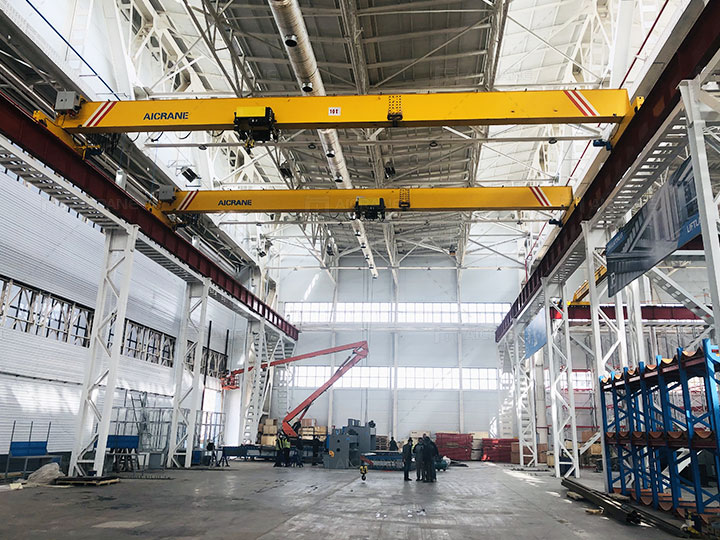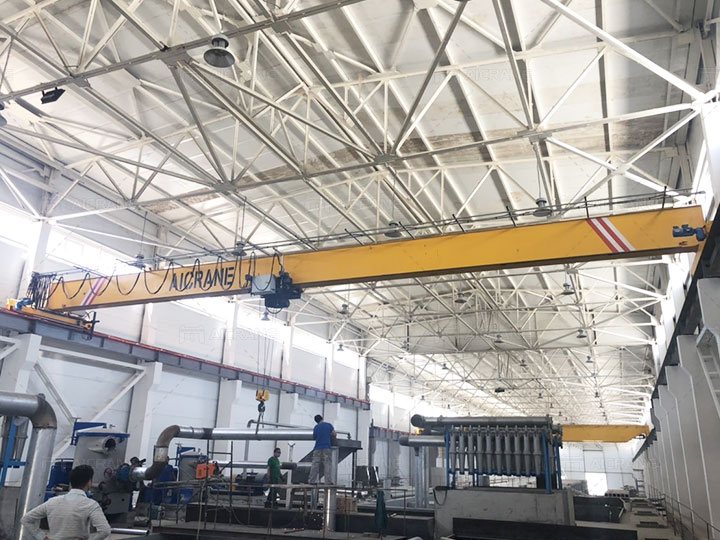When considering the purchase of an overhead crane for your business, understanding the price range for a 10-ton overhead crane is crucial. Overhead cranes, particularly those used in heavy-duty industrial settings, are an essential part of operations that require material handling. From construction sites to factories and warehouses, these cranes play a pivotal role in lifting and moving heavy loads with precision. However, the cost of such equipment can vary greatly depending on a range of factors. This article will break down the factors that influence the cost of a 10-ton overhead crane and provide insights into the typical price range for these systems.

What is a 10-Ton Overhead Crane?
A 10 ton overhead crane is a lifting device capable of handling loads up to 10 metric tons (or 10,000 kilograms). These cranes are typically used for lifting and moving materials such as steel, machinery, components, and other heavy goods within a factory or warehouse. They can come in various configurations, including:
-
Single Girder Overhead Crane: A single beam that supports the lifting mechanism.
-
Double Girder Overhead Crane: Two parallel beams that support the lifting mechanism and allow for larger capacities and greater stability.
-
Top Running Overhead Crane: The crane moves along rails mounted on top of the supporting structure.
-
Under Running Overhead Crane: The crane moves along rails mounted beneath the supporting structure.
The price of a 10-ton overhead crane will vary depending on the configuration, as well as a variety of other factors that affect cost.

Factors Influencing the Price of a 10-Ton Overhead Crane
Several factors come into play when determining the price of a 10-ton overhead crane. Below are the most significant ones:
-
Crane Type and Configuration
The type of crane you choose plays a significant role in the price. A basic single girder overhead crane will typically cost less than a double girder crane. This is because a double girder crane is more complex and offers higher lifting capacity, more stability, and increased versatility. Additionally, the choice between top running and under running cranes will also affect the overhead crane price. Top running cranes are often more expensive due to their higher lifting capacity and greater ease of installation. -
Material and Build Quality
The materials used to manufacture the crane, such as high-quality steel, alloy components, and specialized coatings for durability, will also impact the price. High-quality materials ensure a longer lifespan, better load-bearing capacity, and better resistance to wear and tear. Additionally, some manufacturers offer customization options, such as corrosion-resistant coatings or temperature-resistant materials, which can drive the price up. -
Brand and Manufacturer
The reputation and experience of the crane manufacturer are another crucial factor in pricing. Well-established brands with a reputation for producing durable, high-quality equipment often charge a premium for their products. However, the added cost may be worthwhile if it ensures reliable performance, excellent after-sales support, and long-term value. It’s also essential to consider the crane supplier’s after-sales service, including installation, maintenance, and warranty. -
Lift Height and Span
The lifting height and span (distance between the two end supports of the crane) will also impact the price. A crane designed to lift to greater heights or cover a larger span requires more robust engineering, which increases its cost. A typical 10-ton overhead crane might have a standard lifting height of between 6 to 12 meters, but custom requirements can raise the price. -
Control System
The type of control system (manual, pendant, or wireless remote) can also affect the price. Manual control systems are less expensive, but pendant controls and wireless remote systems provide greater precision and convenience, driving up the cost. Modern control systems often come with advanced features such as load sensors, speed controls, and safety features, which further increase the price. -
Duty Cycle and Frequency
Cranes are designed to handle different levels of workload. The duty cycle refers to the frequency with which the crane operates and the intensity of its operations. If a 10-ton heavy duty overhead crane is designed for frequent and heavy-duty lifting operations, it will likely be built with more durable components and higher specifications, which can increase the cost. For example, cranes rated for heavy-duty service (Class C or higher) will be more expensive than those designed for light or moderate use (Class A or B). -
Installation and Shipping Costs
The complexity of the installation process and the location of the installation site can also influence the price of a 10-ton overhead crane. Some cranes are easy to install and may come with pre-assembled parts, reducing the cost. However, more complex systems or cranes that require custom adjustments may incur additional installation costs. Shipping costs are another consideration, especially if the crane needs to be delivered over long distances or across international borders. -
Customization
Custom cranes designed to meet specific operational needs are often more expensive. If you need specific features like explosion-proof designs, enhanced safety measures, or modifications for particular load types (such as temperature-sensitive or hazardous materials), these additions can increase the cost of the crane significantly.
What is the Price Range for a 10-Ton Overhead Crane?
Considering the various factors mentioned above, the price range for a 10-ton overhead crane typically falls between $15,000 to $50,000 or more, depending on the configuration and customization.
-
Low-End Range ($15,000 to $25,000): In this range, you can expect to find a basic, entry-level 10-ton single girder crane. These models typically have a standard lifting height, a basic control system (such as pendant control), and are suitable for light to moderate-duty applications. These cranes are typically manufactured in countries with lower labor costs, which can contribute to their lower price.
-
Mid-Range ($25,000 to $35,000): Mid-range cranes typically offer better materials, more advanced control systems, and additional safety features. These cranes may come with a double girder design or other enhancements such as variable speed drives, wireless control systems, or higher duty cycles. They are suitable for more demanding applications, including industrial plants and warehouses that require continuous operation.
-
High-End Range ($35,000 to $50,000+): High-end 10-ton overhead cranes are designed for heavy-duty operations, with custom configurations, high-quality materials, and advanced features such as fully automated control systems, explosion-proof designs, and longer lift heights or wider spans. These cranes are built to last longer and are ideal for operations that require high precision, heavy workloads, and maximum reliability. These models are often produced by well-established manufacturers and come with comprehensive after-sales service and support.
Additional Costs to Consider
In addition to the base price of the crane, there are other costs that you should consider when purchasing a 10-ton overhead crane:
-
Maintenance and Spare Parts: Regular maintenance is required to keep the crane in good working condition. You should factor in the cost of spare parts, lubricants, and routine service calls, which may vary depending on the crane’s brand and complexity.
-
Training: If you have a team of operators who need to be trained on how to use the crane, this will add to the overall cost. Many manufacturers offer training services as part of the purchase package or as an additional cost.
-
Upgrades and Accessories: If you require additional features or accessories such as upgraded hoists, advanced safety systems, or extra lifting equipment, these will increase the overall cost of your crane.
Conclusion
The price of a 10-ton overhead crane is influenced by various factors, including the crane type, control system, lifting capacity, and customizations. While the typical price range falls between $15,000 to $50,000, it’s essential to thoroughly assess your needs and budget to determine the most suitable option. By considering the specific demands of your industry and operations, you can find a crane that offers the right balance of cost, performance, and durability. Additionally, working with a reputable manufacturer who offers excellent after-sales support and warranty services will ensure that your investment in a 10-ton overhead crane pays off for years to come.